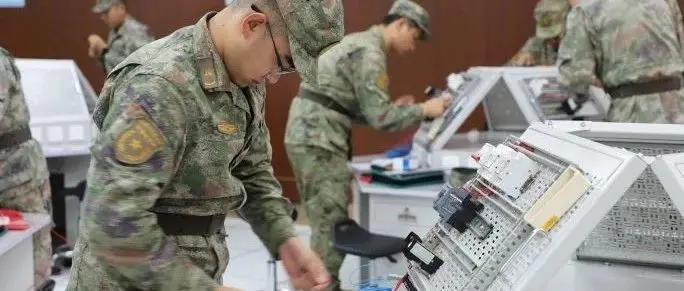Target management of military technology-intensive support units

Target management of military technology-intensive support units
Technically intensive support units are a significant component of our military's new combat capabilities. Due to their unique positioning, specific tasks, and specialized operations, it is suitable to apply the theory and methods of goal management to the management practices of such units. This article focuses on how to enhance the management level of technically intensive support units, analyzing the special requirements for managing such units from the perspective of promoting the generation and release of core capabilities, and proposes a set of methods for constructing a management system based on goal management, along with key points to be grasped.
Target management, a modern management method proposed by Professor Drucker in the year, emphasizes guiding and motivating employee behavior through setting clear and specific goals to achieve the overall strategy and vision of the organization. Since the 20th National Congress of the Communist Party of China, with the acceleration of the modernization process of the national governance system and governance capabilities, military governance, especially the classification management of troops, has become a widely concerned important topic. Technologically intensive support units not only play a unique role in promoting the construction of new combat capabilities but are also an important field of practice in classification management.
I. Opportunities and Challenges Faced by Management in Technology-Intensive Support Units
The mission tasks and organizational structures of technology-intensive support units differ significantly from those of traditional military formations, facing unique opportunities and challenges in management practices. On one hand, the continuous advancement of national defense and military reforms provides new spaces for management innovation in these units. On the other hand, in the face of deep-seated structural challenges, it is urgent to introduce new management thinking and methods.
II. Special Requirements for the Management of Technology-Intensive Support Units
Highly dependent on professional technology and intellectual input, technology-intensive security units, due to their flat organizational structure, dense concentration of professionals, and extensive use of technical equipment and information systems, have special management practice requirements. Firstly, there is a stronger emphasis on the pull of common goals. Secondly, there is a stronger emphasis on knowledge and technical requirements. Thirdly, there is a stronger emphasis on the mechanisms of professional development.
III. The Significance and Role of Introducing Target Management
Goal management emphasizes the consistency of goals at all levels within an organization and drives the achievement of common goals through "responsibility" to drive "self-control." Conscious innovation and creation are the intrinsic pursuits of the vast majority of officers and soldiers in technology-intensive support units, serving as the primary motivation for fulfilling duties and responsibilities and improving performance. Introducing goal management methods holds significant importance for further ensuring focus on primary duties and responsibilities, continuously enhancing core support capabilities, and achieving comprehensive personal development.
IV. Construction of Unit Management System Based on Goal Management
Building a technology-intensive unit management system starts with clarifying the core capabilities of the unit, with the main focus on determining the mission and vision, setting management goals, implementing goal decomposition, and evaluating feedback and incentive assessment. The key lies in addressing these four aspects.
(I) Analysis of Core Assurance Capability Composition
Comprehensive analysis of the core competency composition of technology-intensive support units is the prerequisite for constructing a management system. Core competencies differ from general competencies; they are not only the unique advantages that such units possess in specific professional fields but also the significant markers that distinguish them from other units. These core competencies primarily encompass four aspects.
(II) Analysis of Mission, Tasks, and Management Objectives
The management objectives must align with functional tasks. The fundamental mission of technology-intensive support units is to anchor the goals of building a strong military in the new era, taking "demand-driven + technology-driven" as the basic approach, continuously enhancing core support capabilities, providing knowledge products and professional support to the supported objects, and ensuring the military's execution of information-based joint operations tasks based on networked information systems.
(III) Decomposition of Unit Management Objectives
Emphasizing the alignment of objectives between superiors and subordinates in organizational management activities is the original intention and purpose of introducing target management. In a technology-intensive support unit, there are no departmental or job-specific objectives that are separate from the overall objectives of the unit.
(IV) Key Management Indicators and Evaluation Metrics
The effectiveness of management in technology-intensive security units requires the application of a series of key indicators to track performance and assess outcomes. The development of these key indicators is predicated on defining the content, level, and focus of management activities in relation to the management objectives, as well as the relationships between various organizations, personnel, and activities.
V. Conclusion
Implementing target management in technology-intensive support units, the primary task is to establish the unit's management vision, the foundation is to stimulate the motivation and potential of officers and soldiers, the key is to enhance communication and collaboration, and the core is to effectively implement feedback and evaluation. This requires adhering to "the sole and fundamental standard of combat effectiveness," firmly anchoring the unit's management goals to the core support capability construction, promoting collaborative innovation between individuals and organizations, evaluating feedback through a benchmark indicator system, adjusting and optimizing management decisions and measures, ultimately achieving the shared vision of individuals and the collective, and continuously increasing the contribution of management to the cause of a strong military.

